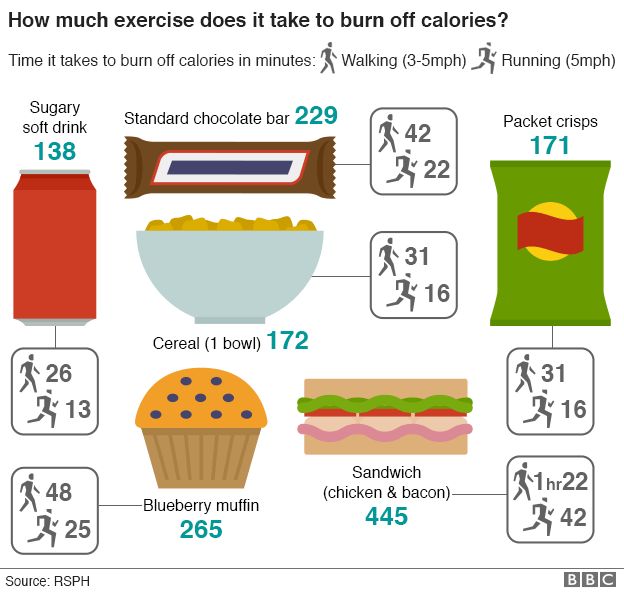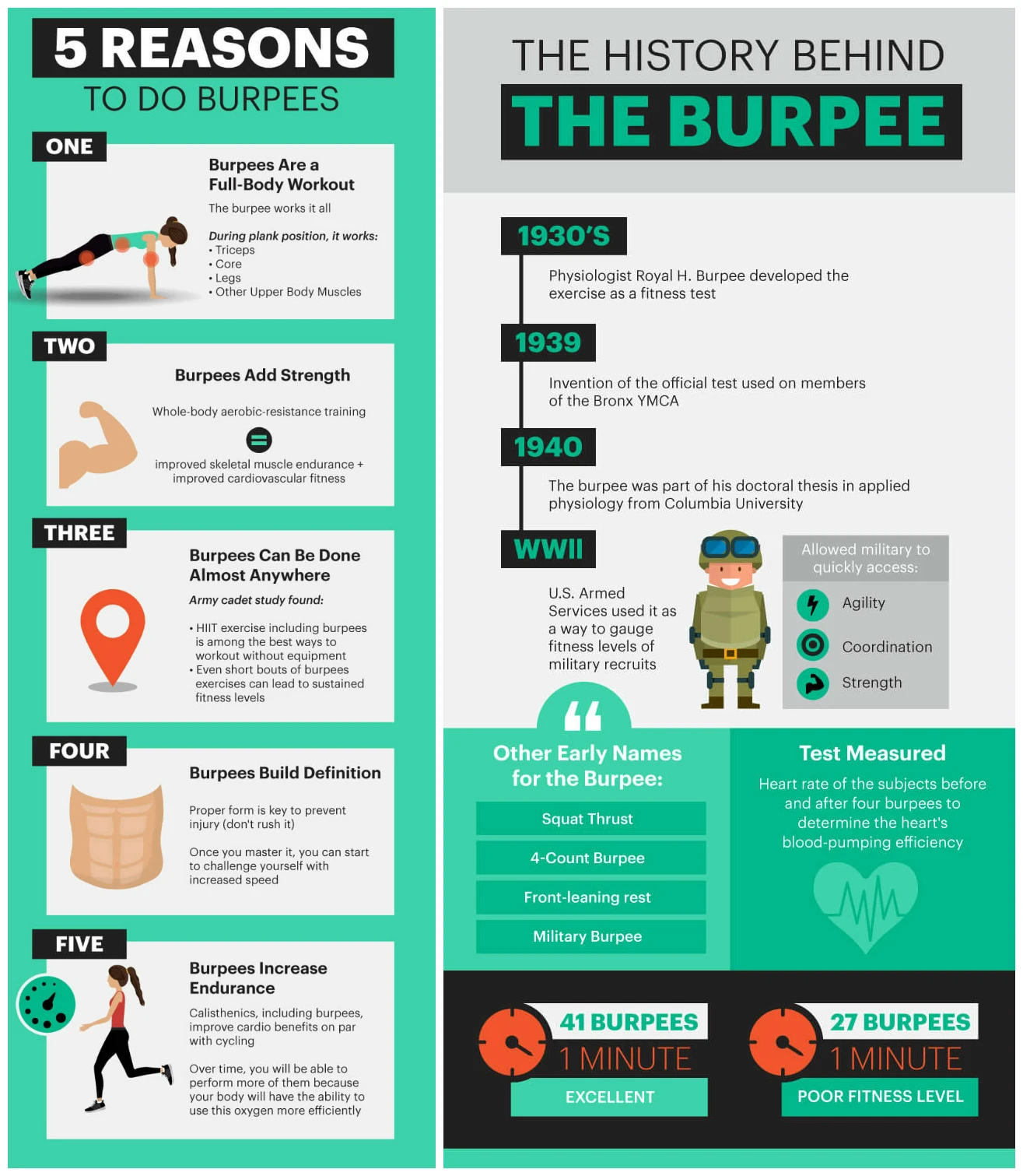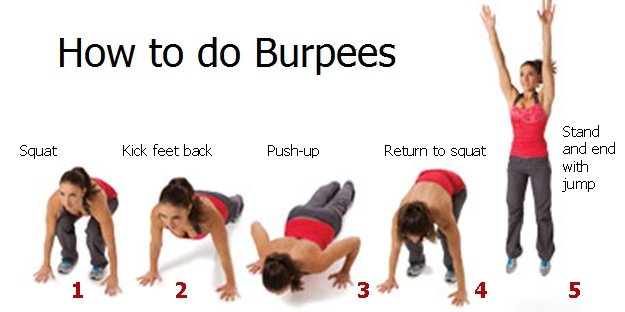For those that need a refresher or another copy for themselves, below is the workout completed for the week of December 7th - December 11th.
Labels
- Basketball Unit Notes
- FiT Work
- Fitness and Conditioning
- FitnessGram
- Flag Football Notes
- Habits of Success
- LAX Unit
- MILE RUN LOG
- Orientation Stuff
- Parent/Guardian Excuse Form
- Pickle-Ball Notes
- Portfolio Stuff
- Rubrics
- Score Sheets
- Skill Cues
- Softball Notes
- Study Guides
- Table Tennis Notes
- Timers
- Track and Field
- Track and Field Team Page
- Volleyball Notes
- WOD's
- Wolverine Basketball Team Page
- Wolverine Volleyball Team Page
- Work-Out Tips
- Workouts (SY20-21)
Translate
Friday, December 11, 2020
Burpees, Air Squats, Sit-Ups (Dec.10-11) and Return of the Wall Sits (Dec.7-8)
Wednesday, December 9, 2020
Resilience Lesson Worksheets (Habit of Success)
Resilience Lesson Worksheets (Habit of Success)
"FOR HOMEROOM MENTORING ONLY"
Saturday, December 5, 2020
Tabata Times Workout (Dec.3-4)
For those that need a refresher or another copy for themselves, below is the workout completed for the week of November 30th - December 4th.
Tuesday, November 24, 2020
Turkey Trot Workout (Nov.23-24)
For those that need a refresher or another copy for themselves, below is the workout completed for the week of November 23rd - 27th (Thanksgiving Week).
Turkey Trot Workout (Nov.23-24)
Slide 1 - Title Page
Slide 2 - Agenda / Workout Video
Friday, November 20, 2020
Down The Ladder Workout (Nov.16-17) and Russell Relaxation 6 (Nov.19-20)
For those that need a refresher or another copy for themselves, below are the workouts completed for the week of November 16th - 20th.
Down The Ladder Workout (Nov.16-17)
Slide 1 - Title Page
Wednesday, November 18, 2020
Self Efficacy Lesson Worksheets (Habit of Success)
Self Efficacy Lesson Worksheets (Habit of Success)
"FOR HOMEROOM MENTORING ONLY"
Friday, November 13, 2020
Sally Squats Challenge (Nov.9-10) and These are the Breaks (Nov.12-13)
For those that need a refresher or another copy for themselves, below are the workouts completed for the week of November 3rd - 6th.
Friday, November 6, 2020
Death By Burpees Workout (Nov. 3-4) and Another Stretch Routine (Nov.5-6)
Friday, October 30, 2020
3 Headed Monster Workout (Oct.26-27) and Goosebumps Workout (Oct.29-30)
Friday, October 23, 2020
Abs and 100 Lunge Retest (Oct.19-20) and Crunch Time Workout (Oct.22-23)
Below are the workouts completed for the week of October 19th - 23rd.
Reminder: It is your responsibility to make up any missed work as well as to inform me that you have turned in any late work, so that I may update your grade.
Saturday, October 17, 2020
HAPPY PLACE WORKOUT (Oct.13-14) and Russell Relaxation #5 (Oct.15-16)
Below are the workouts completed for the week of October 13th - 16th.
Reminder: It is your responsibility to make up any missed work as well as to inform me that you have turned in any late work, so that I may update your grade.
Friday, October 9, 2020
The Trifecta Workout (Oct. 5-6) and Raise The Roof Workout (Oct. 8-9)
Below are the workouts completed for the week of October 5th - 9th.
Reminder: It is your responsibility to make up any missed work as well as to inform me that you have turned in any late work, so that I may update your grade.
The Trifecta Workout
(Oct. 5-6)
Sunday, October 4, 2020
Sept. 28-29 (12 Minute AMRAP) and Oct. 1-2 (Russell Relaxation 4)
Here are the workouts completed for the week of September 28 - October 2.
Reminder: It is your responsibility to make up any missed work as well as to inform me that you have turned in any late work, so that I may update your grade.
Tuesday, September 29, 2020
How to Build Up to a Push-Up
How to Build Up to a Push-Up
Make the hard start, easier
In the beginning push-ups are hard. If you try to do a push-up and can’t, go on your knees and do a push-up that way. You work the same muscles but you place less weight on them. So with each one you simply become stronger.
Strength comes with repetition. The more you do, the stronger you get and the easier it all becomes.
What they work
Push-ups work your arms (triceps and forearms), your chest, lower back, abs, quads and calves. They work the intercostal muscles covering your ribs and if you do enough of them and breathe in and out explosively as you do them they even work your lungs which means they become an aerobic exercise that also works your cardiovascular and aerobic systems.
Courtesy of Darebee.
Sunday, September 27, 2020
Sept. 21-22 (The 7 Minute Abs Workout) and Sept. 24-25 (Total Body Workout)
Here are the workouts done for the week of September 21-25.
Reminder: It is your responsibility to make up any missed work as well as to inform me that you have turned in any late work, so that I may update your grade.
Sept. 21-22
(The 7 Minute Abs Workout)
Sept. 24-25 (Total Body Workout)
Friday, September 18, 2020
Sept. 14-15 (Russell Relaxation) and Sept. 17-18 (Burpee, Sit-Up, Air Squat)
Here are the workouts done for the week of September 14-18.
Reminder: It is your responsibility to make
up any missed work as well as to inform me that you have turned in any late
work, so that I may update your grade.
Sept. 14-15
(Russell Relaxation)
Sept. 17-18
(Burpee, Sit-Up, Air Squat)
Friday, September 11, 2020
Sept. 8-9 (Shoulders and Lunge Challenge Workout) and Sept. 10-11 (Curl-Up Diagnostic)
Here are the workouts done for the week of September 7-11.
Reminder: It is your responsibility to make up any missed work as well as to inform me that you have turned in any late work, so that I may update your grade.
Sept. 8-9 (Shoulders and Lunge Challenge Workout)
Thursday, September 3, 2020
What is a Tabata?
Wednesday, September 2, 2020
Your Average Daily Calorie Requirements, Easy Ways to Burn off 100 Calories
Burning Calories doesn't always have to be a heavy undertaking with hours spent at the gym. A high intensity 10-minute home workout can burn calories at lightning speed.

The Calorie Math Poster helps everyone understand how to balance calories coming in and going out.
The message is simple, "Maintain an active lifestyle and be aware of the calories that you eat and drink at each meal."
Here are key messages and facts on this beautiful poster that gives all of the stats for movement and health:
- Whole unprocessed foods that are low in added fats and sugars and higher in fiber fill you up on fewer calories.
- Fried foods increase calories by up to three times!
- Any movement counts, pick a favorite to burn double or more calories moving versus sitting.
- It is easy to lose a pound a week by eating 250 fewer calories and moving more to burn 250 calories per day with exercise.
- Calories per day for various activity levels are shown.
- How to balance calories per day by dividing them between meals and snacks
- How many calories are in a pound of body fat?


Thursday, August 13, 2020
Zoom/Google/Online Class Rules, Etiquette, and Expectations
WELCOME NEW 7th Graders,
Tuesday, May 26, 2020
Tips on staying hydrated / How to know when you are thirsty
- Schedule regular beverage breaks and keep
a water bottle handy so you can take frequent sips of water
while you work or exercise.
- Choose electrolyte-replacing drinks for maximum
water absorption when you are exercising for more than an hour or when you
are sweating excessively during exercise in hot weather.
- Drink water after you've finished work or an exercise
session.
- Snack on fresh fruits that are rich in water,
like berries, watermelon, peaches, and nectarines.
Thursday, May 21, 2020
Russell Relaxation Workout
2) Submit the video into google classroom.
Saturday, May 2, 2020
What is a Burpee, it's Possible Benefits and How to Perform One
What is A Burpee
An example of a Burpee in Slow Motion:



Sunday, March 22, 2020
How to Perform The Basic Plank
Thursday, March 19, 2020
How to insert a picture or clip art into an excel file (similar to google sheets)
Hopefully this works for you.
If you have come up with some other way to show evidence of your work, please email me so that I may see if that is a viable option.
Monday, March 16, 2020
Saturday, March 14, 2020
Morning Stretch Workout
Top to Bottom Stretching / Cool Down
Here are some simple after workout stretches that you can try out to help you avoid muscle cramping and stiffness.
Wednesday, March 11, 2020
What is the Fitnessgram Push Up Test and how to get better at it.
- Students begin in the up position and follow the cadence while they complete the push-ups.
- With a straight back, students must go down low enough so there is a minimum 90 degree bend in their elbows.
- Return to the up position in pace with the cadence and with arms fully extended.
- Form errors include: not going low enough, stopping or not maintaining the proper pace, not maintaining the correct straight back body position, not extending arms fully enough and touching with the body on the way down.
- After the first form error students get the opportunity to make the correction.
- After the second form error the test is concluded.
Monday, February 24, 2020
Sample PACER Individual Score Sheet
Sunday, February 9, 2020
Helpful Illustrations/Diagrams to Common Volleyball Skills

The floater
This ball flight has no stabilizing spin and will dart more like a knuckle ball in baseball. The secret is to simply hit the ball in the center - in relation to its line of flight - so very little or no spin occurs. Floaters work equally well with the underhand serve or the overhand. The movement of the ball is very unpredictable to the opposing players.
This ball flight results when the ball is struck on top using wrist snap and moves very quickly over the net. The beauty of this shot is that it drops suddenly, leaving little time for an opponent to react.

This ball flight requires a higher toss and a literal jump in the air. Apply contact with the ball just as in the Top Spin serve, and the results can be even more devastating given the added force of the jump. However, this is the hardest serve to master, and without sufficient top spin, the ball will likely end up way out of bounds. It’s safest to aim this serve at the middle of the court.
This ball flight can be most effective outdoors in windy conditions. Approach the shot just like a top spin serve until the moment of impact and then hit the ball left or right of center. The ball will curve in the direction in which it is hit.
 Since this is the easiest serve to execute, don’t be embarrassed to use it in novice or recreational situations. The goal of any serve is to get the ball in play. Sure, we all like to hit an “ace” that rockets across the net, but the first obligation is to maintain serve. The technique is to gently toss the ball up and in front of yourself while bringing the other hand forward to make contact. A simple toss of several inches will suffice. Make contact with the heel of the hand or the open part of the palm along the index finger and the thumb. If you prefer to fold you fingers into your palm for strength or control, keep your thumb out to the side and avoid striking the ball with your knuckles. Such an irregular surface can make the ball go in unpredictable directions. Stand outside the court, anywhere along and behind the end line, about ten feet from the right sideline. If you’re right-handed, hold the ball in you left hand and take a step forward with your left foot while lobbing the ball ever so slightly in front of yourself. All this time you bring your right arm back past your hip and then forward to meet the ball just as it is coming down from the low toss. Never take your eyes off the ball. Just before you start your serve make a mental picture of the opponent’s positions on the court and decide where you’re going to attempt to put the ball.
Since this is the easiest serve to execute, don’t be embarrassed to use it in novice or recreational situations. The goal of any serve is to get the ball in play. Sure, we all like to hit an “ace” that rockets across the net, but the first obligation is to maintain serve. The technique is to gently toss the ball up and in front of yourself while bringing the other hand forward to make contact. A simple toss of several inches will suffice. Make contact with the heel of the hand or the open part of the palm along the index finger and the thumb. If you prefer to fold you fingers into your palm for strength or control, keep your thumb out to the side and avoid striking the ball with your knuckles. Such an irregular surface can make the ball go in unpredictable directions. Stand outside the court, anywhere along and behind the end line, about ten feet from the right sideline. If you’re right-handed, hold the ball in you left hand and take a step forward with your left foot while lobbing the ball ever so slightly in front of yourself. All this time you bring your right arm back past your hip and then forward to meet the ball just as it is coming down from the low toss. Never take your eyes off the ball. Just before you start your serve make a mental picture of the opponent’s positions on the court and decide where you’re going to attempt to put the ball.Forearm Pass

2. Press the wrists and hands down to hyperextend the arms
3. Lock your elbows. This gives the ball the most area to hit, and helps you control the direction of your pass.
4. Try to bend your knees before the ball gets to you so that you can both absorb the serve and re-direct the pass.
5. Don’t swing at the ball, but do try to shrug your shoulders toward your target at the moment of impact.
1. Get to the ball.
2. Face your target (except when you’re deliberately making a back set).
3. Bend your elbows and your knees.
4. Look at the ball through the opening between your hands.
5. Bring both hands into contact with the ball simultaneously.
6. Don’t let the ball touch your palm. This is called a push, and is a violation. If the ball comes to rest in you hand, or you strike the ball unevenly with either hand, you’ll be in violation.
7. Receive the ball over your head, and let it snap out of your finger pads. Keep your hands above your face or you’ll be whistled.

Two Set - Set two to four feet above the net and is also quick. Again, this ball is usually for the middle hitter.
Three Set - Also set low and fast (about 4-6 feet above the net and delivered midway between the setter and the sideline). This ball is for either the middle or outside hitter.
Four Set - A low set (1 - 2 feet above the net) for the outside hitter that is delivered near the sideline and over the net. Sometimes called a “Shoot Set.”
Five Set - A high Backset near the sideline.
Six Set - (fist hand signal) A high outside set to either sideline.
The triple block is used occasionally and requires all three front row players to participate. No back line players may come up to block.
The proper technique for a dig is similar to a bump pass, but your knees are bent much more and your weight is more forward to be able to extend yourself to the floor if necessary to retrieve the ball. Sprawling, rolling and diving are extremely important techniques used to dig a ball. Proper execution, leg placement, timing of floor contact, and returning to your feet are considerations. Watch others, ask for instruction and practice these skills often in non-game conditions to avoid injury to yourself or others.
Cross Court Shot - This ball must be hit extremely hard while aiming for a space on the floor between the front row players and the back row player that is diagonally positioned farthest from the hitter.






























